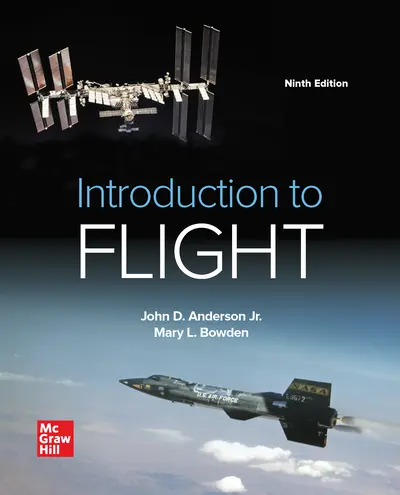My Account Details

ISBN10: 1260226743 | ISBN13: 9781260226744

* The estimated amount of time this product will be on the market is based on a number of factors, including faculty input to instructional design and the prior revision cycle and updates to academic research-which typically results in a revision cycle ranging from every two to four years for this product. Pricing subject to change at any time.
Instructor Information
Quick Actions (Only for Validated Instructor Accounts):
Anderson's Introduction to Flight is designed for first or second-year engineering students and any reader looking for an introduction to aerospace engineering. It is written in an intentionally easy-to-understand style. Readers are introduced to the basic areas of aerodynamics, flight dynamics, propulsion, and space flight (astronautics). In this edition, space flight content covers the expanding role of space vehicles within the field of aerospace engineering. Continuing the tradition of the previous edition, the 9th Edition is intended not only to educate but also to motivate the reader to pursue the subject of aerospace engineering. In addition, new sections continue the unique tradition of including historical content discussing the origins of the technology. If you want to understand the engineering behind how airplanes fly, how spacecrafts are launched into space, and how they are able to follow the right path to their destination, this book is for you.
3) The Standard Atmosphere
4) Basic Aerodynamics
5) Airfoils, Wings, and Other Aerodynamics Shapes
6) Elements of Airplane Performance
7) Principles of Stability and Control
8) Space Flight (Astronautics)
9) Propulsion
10) Hypersonic Vehicles
Appendix A - Standard Atmosphere, SI Units
Appendix B - Standard Atmosphere, English Engineering Units
Appendix C - Symbols and Conversion Factors
Appendix D - Airfoil Data
Answer Key
Index
Accessibility
Creating accessible products is a priority for McGraw Hill. We make accessibility and adhering to WCAG AA guidelines a part of our day-to-day development efforts and product roadmaps.
For more information, visit our accessibility page, or contact us at accessibility@mheducation.com
Need support? We're here to help - Get real-world support and resources every step of the way.